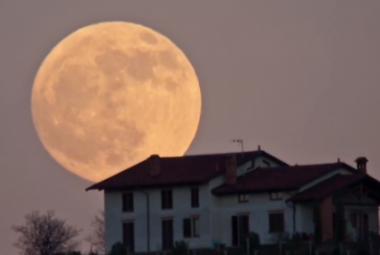Earth cracking the moon, according to study

Based on a recent study, scientist are saying that the Earth is causing the moon's surface to crack.
According to the research, this is being caused by Earth's gravity prying open the moon's faults.
This research was based on the data from NASA's Lunar Reconnaissance Orbiter (LRO) launched in 2009. Images from the LRO gathered by the scientist showed that the moon is contracting, making it shrink.
Researchers said that as the moon influences the tides on Earth, Earth does the same thing to the moon. The portion of the moon that is usually the closest or farthest are what is said to be affected by this phenomenon.
Thomas Watters, a scientist at the Smithsonian Institution's National Air and Space Museum in Washington, D.C., said that the Earth is actually affecting the moon by changing its form. He said that this is being caused by the hot interior of the moon cooling and compressing, making the crust unstable.
The LRO has documented such images on the moon comprised of more than 3,200 fault scraps after six years of taking photos of the moon's surface. The researchers have identified these faults to be of a substantial length and height. They also suggest that these faults, about 60 million years old, are still being created until now.
John Keller, LRO project scientist at NASA's Goddard Space Flight Center in Greenbelt, Maryland also said that the LRO has helped scientist with their study of the moon. With the data that they gather from the orbiter, they are able to get important details that would have been otherwise unknown if it weren't for the LRO.
Watters also added that if the lunar faults are still active until now, it can cause something sort of a quake in the moon. He said that these are brought about by the tides on Earth, when the planet is farther from it. Watters suggests that these quakes can be studied better once seismometers are placed on the moon's surface.
Watters and his co researchers talks more about this incident in detail on the October issue of Geology.











